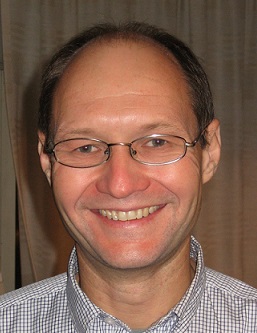Visiting Researchers
 |
Institute |
Institute of Geophysics, ETH Zurich |
Title |
Senior Research Scientist | |
Country |
Switzerland | |
Period of Stay |
2015/03/30 - 2015/04/18 | |
Research Theme |
Probing mantle structure by ocean tide EM induction | |
Host Researcher |
Hisashi UTADA |
Alexey Kuvshinov is a privat docent in the Institute of Geophysics, ETH Zurich where he leads electromagnetic (EM) induction group. He was educated in Russia (Lomonosov Moscow State University and Institute of Terrestrial Magnetism, Ionosphere and Radio Wave Propagation (IZMIRAN) where he completed his PhD in 1987), and since then has served a variety of roles in IZMIRAN, Copenhagen University, and ETH. Since 2010 he is the team leader from ETH in an international project aimed at developing and implementing EM tools for analysis of the data from the European Space Agency geomagnetic multi-satellite mission Swarm. He has been developing mathematical approaches, algorithms and software to simulate EM fields in spherical and Cartesian earth models with a three-dimensional (3-D) conductivity distribution for a wide range of applications, including magnetotellurics (MT), induction logging, controlled-source electromagnetics and global induction. He is perhaps best known for his work describing 3-D induction effects in the magnetic signals/responses from time varying sources of magnetospheric and ionospheric origin both in frequency and time domains. Alexey Kuvshinov has also developed a 3-D EM integral equation frequency-domain numerical solver, which is used worldwide for various applications on global and regional scale. In recent years his research interests have diversified and now include 3-D modelling and analysis of magnetic and electric signals from ocean tides, ocean circulation and tsunamis, 3-D modelling and analysis of Space Weather effects, as well as a development of 3-D EM inversion schemes to interpret global satellite/ground-based induction data. His most recent researches include MT studies in geothermal zone of Ethiopian rift, development of a new MT inverse code, and elaboration of new non-conventional schemes in MT.
